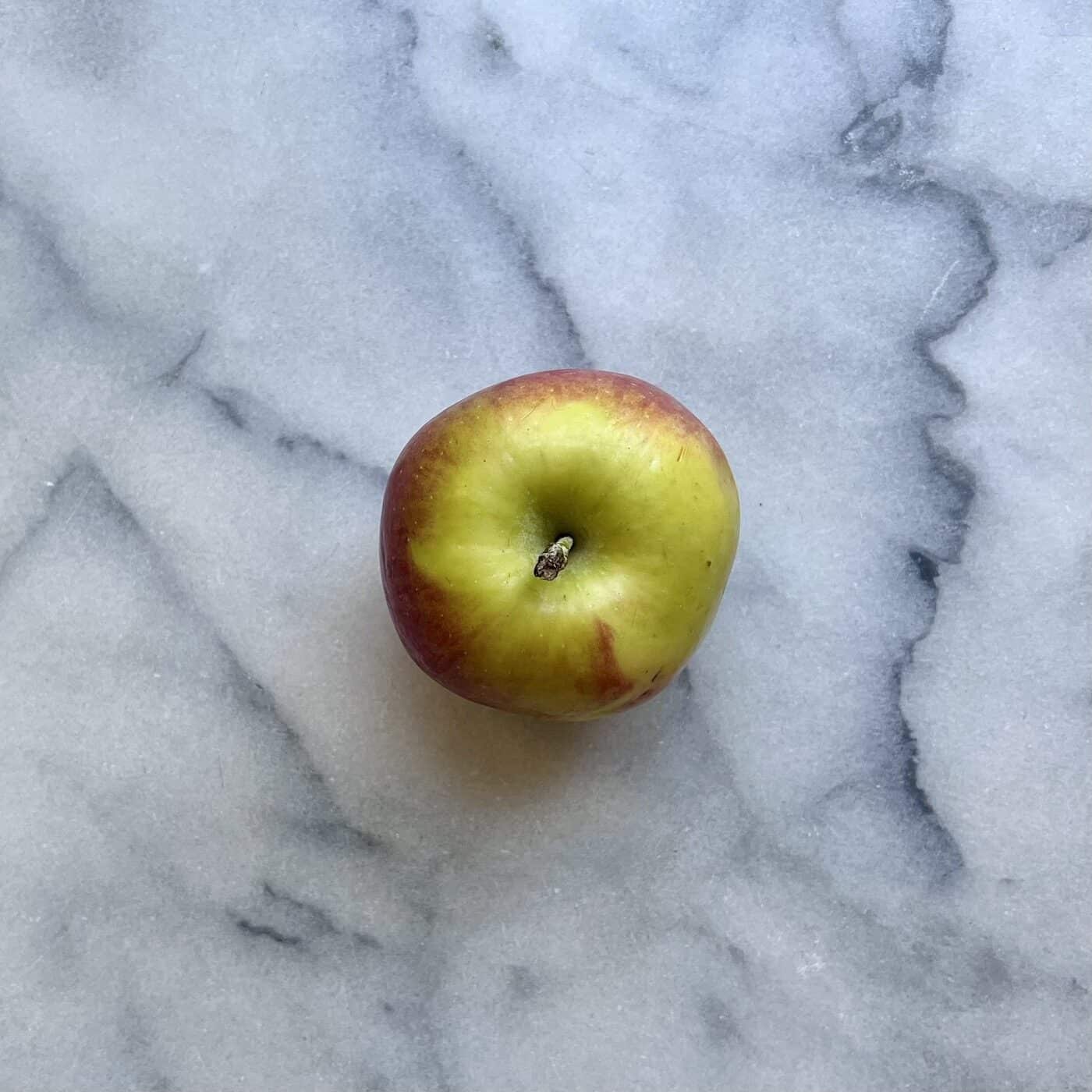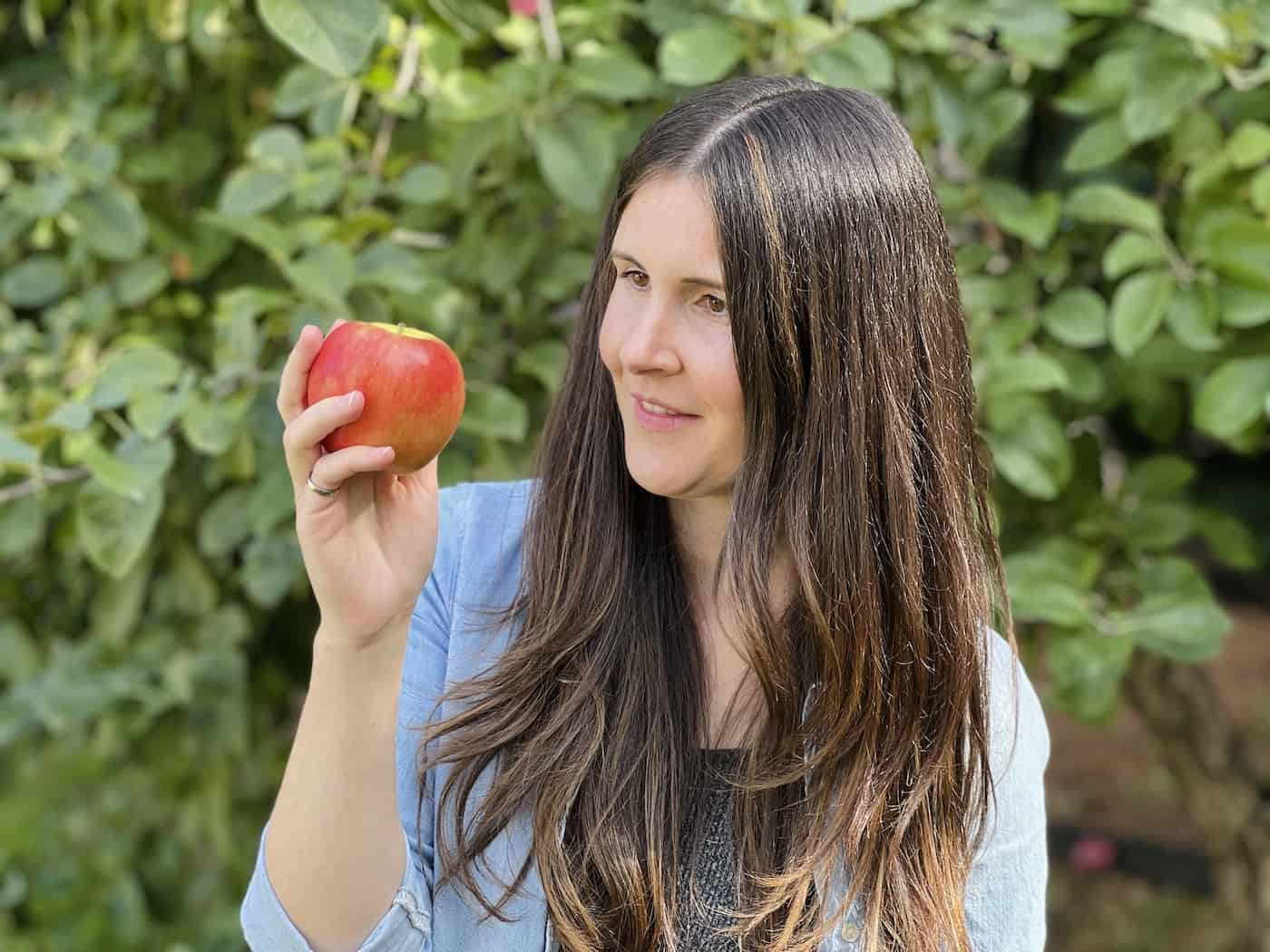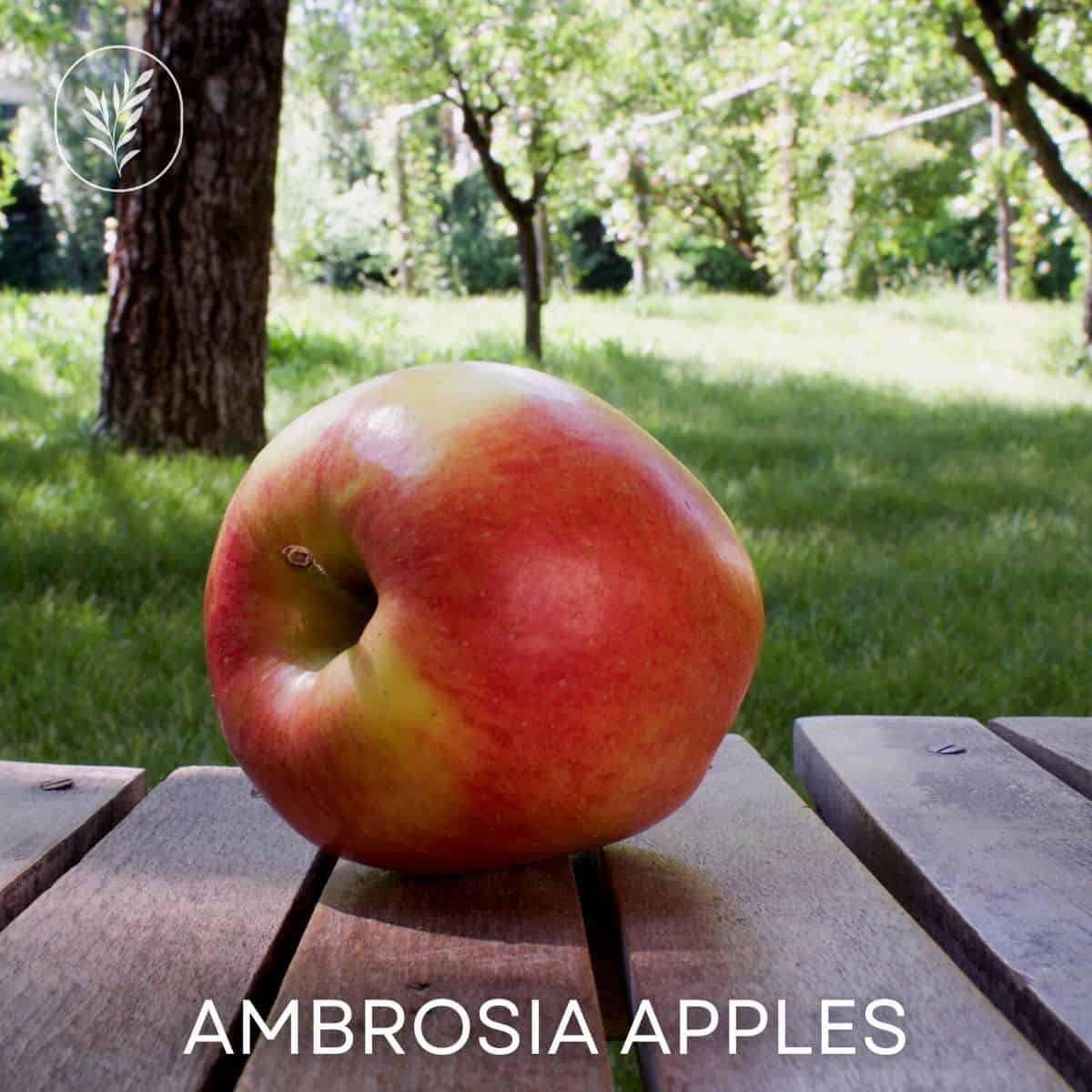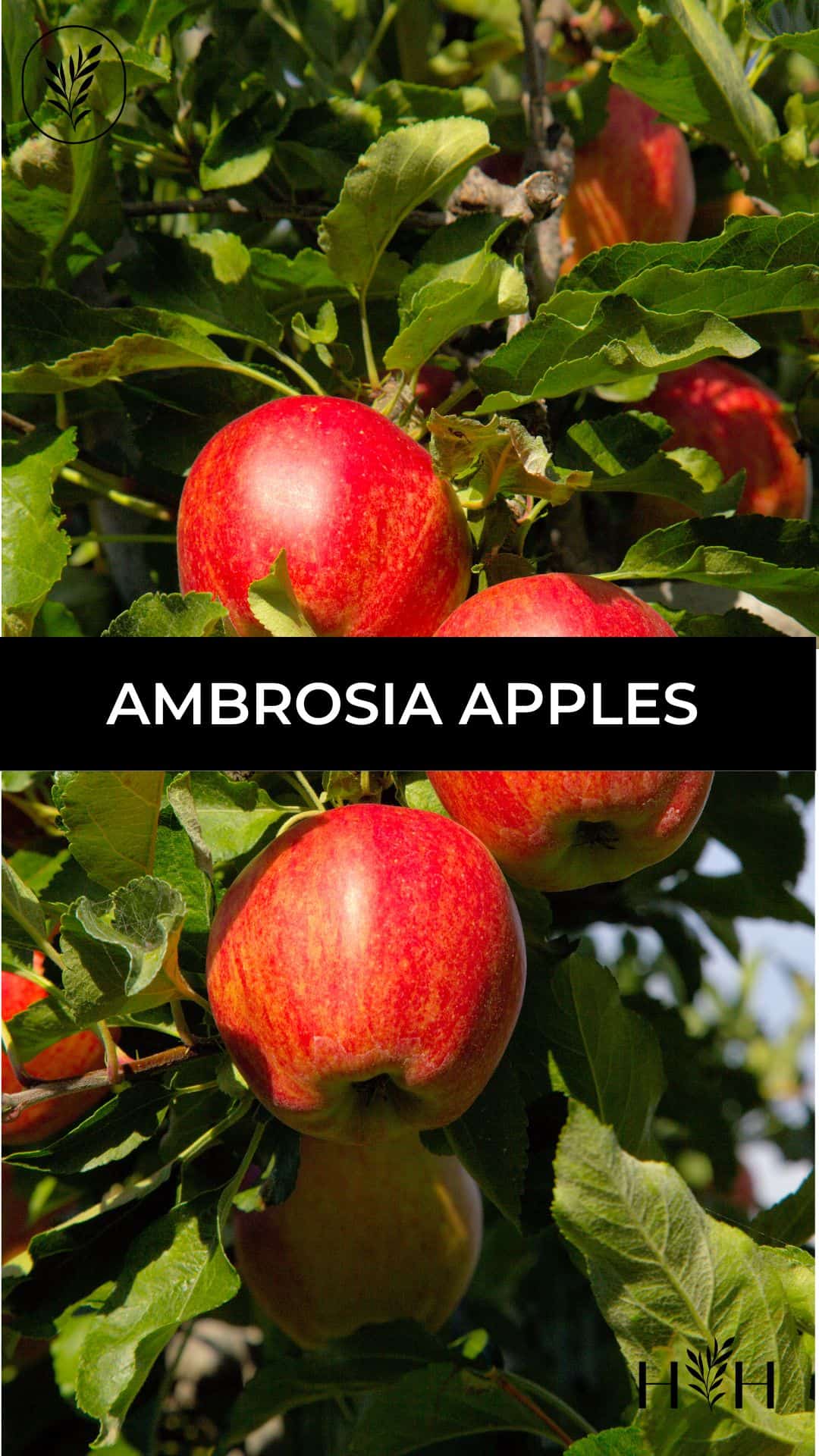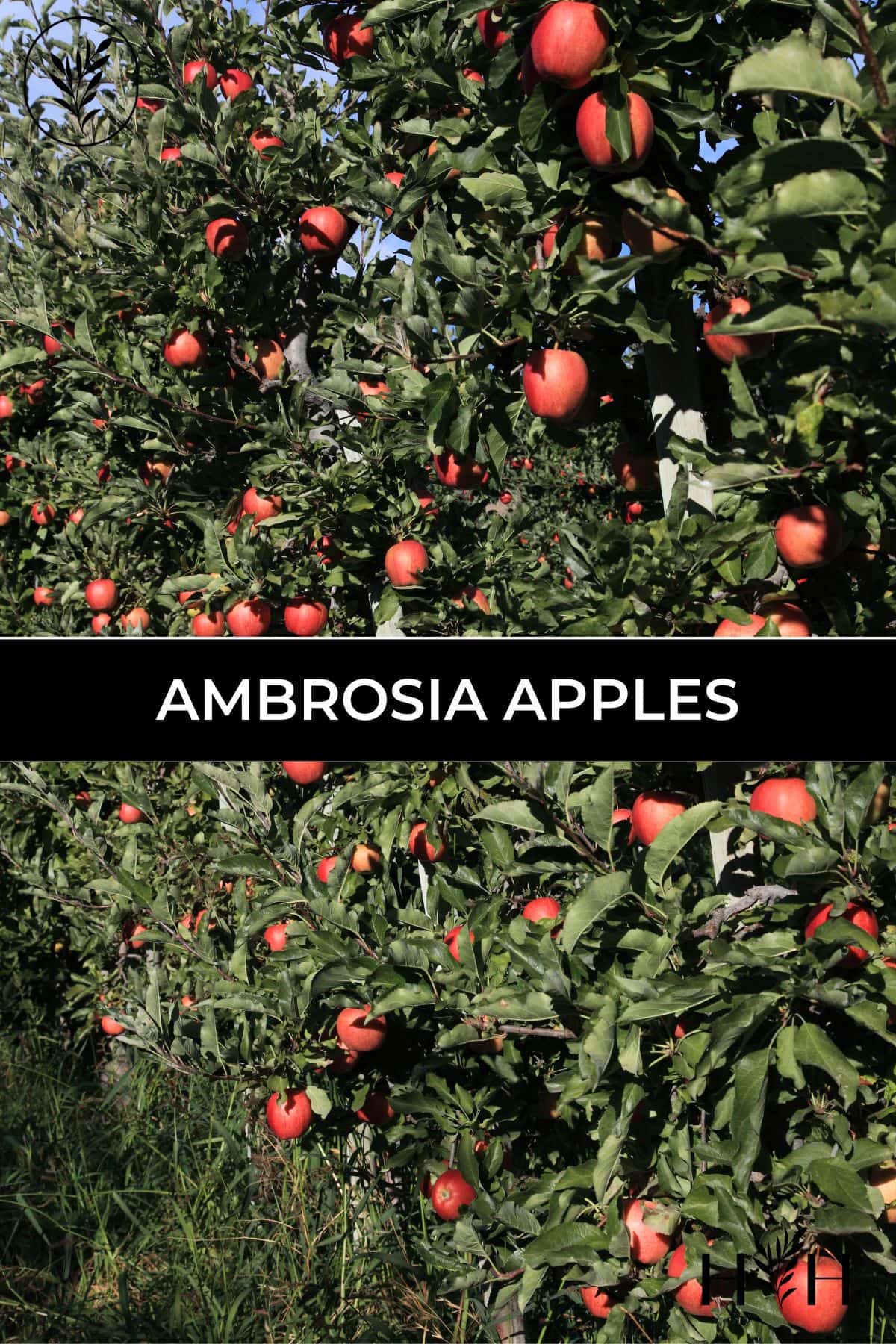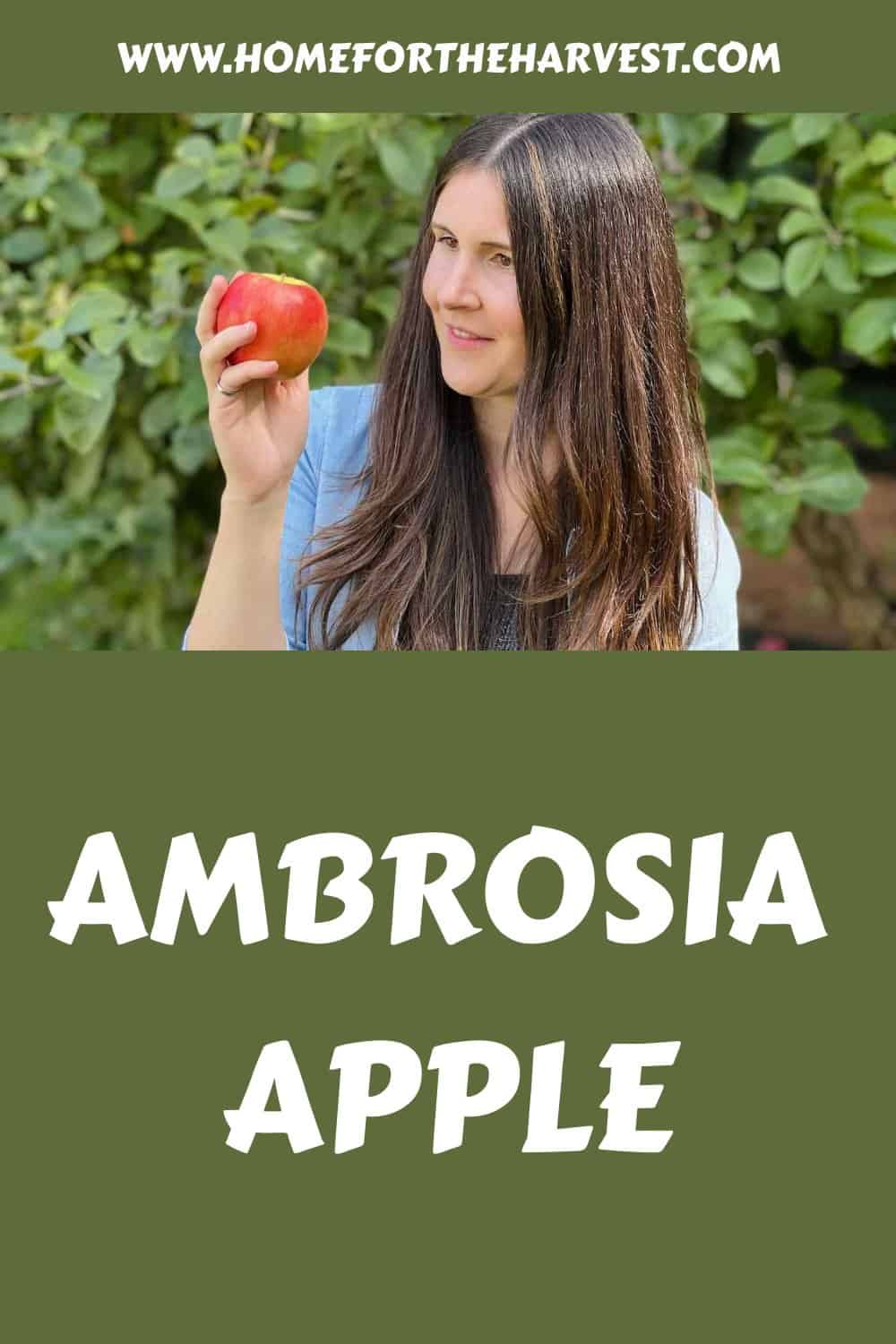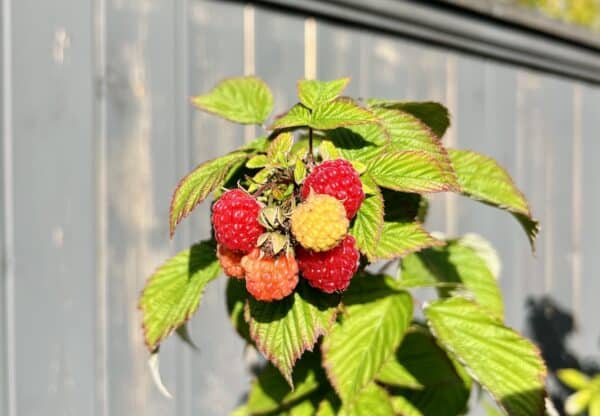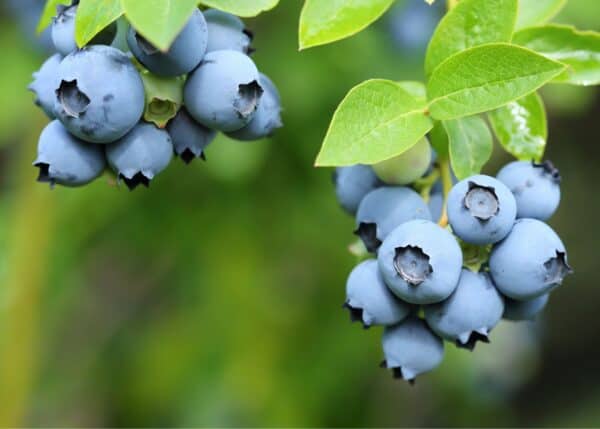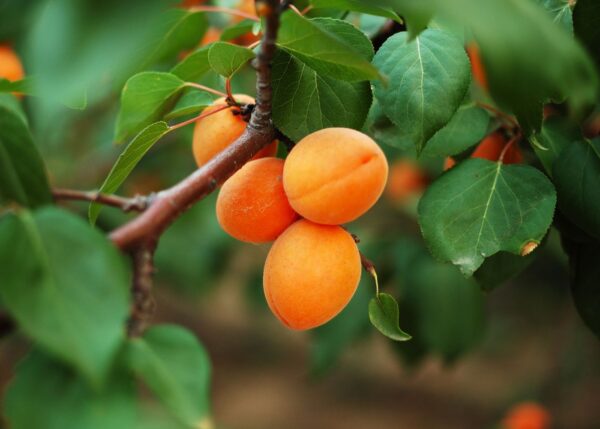Ambrosia Apples are known for their fantastic fresh flavor, ripe juiciness, and rosy blush peel. This newer variety also has an excellent shelf life and fine flesh that resists browning. Discovered by Canadian orchardists Sally and Wilfrid Mennell in the 1990s, Ambrosia is now a highly sought-after variety.
Origin of Ambrosia apples
Ambrosia apples were discovered, cultivated, and introduced in the 1990s by Sally and Wilfrid Mennell in the Similkameen Valley of British Columbia, Canada (just north of Washington State). Wilfrid named the new variety after “the food of the gods” in ancient Greek myths. Perhaps the apple seed was brought by doves!
The area is home to sprawling acres of fruit orchards and vineyards. Sally & Wilfrid still grow organic ambrosia apples at their farm in Cawston, BC, including from the Mother Tree, which sprung up by chance at the end of a row of Jonagold trees.
Though the genetic lineage of Ambrosia is unknown, this type of apple is thought to be a cross of Golden Delicious with Starking Delicious. Golden Delicious is the parent of many popular tasty apples, including the Royal Gala. The Starking Delicious is a strain of Red Delicious known for its superior taste.
“Parentage: Unknown. A naturally occurring chance seedling that was found in a cultivated orchard of Sally and Wilfrid Mennell possibly arising from a cross of Starking Delicious and Golden Delicious.”
Apple Tree Named ‘Ambrosia’, US Patent USPP10789
Ambrosia Apples are the result of the natural cross-pollination of pre-existing cultivars in a commercial production orchard. Ambrosia Apples are not genetically-modified (GMO). This variety is grown organically in many regions due to its naturally hardy genetic makeup.
Filed in 1997, the US Patent for Ambrosia Apple Trees is now expired.
Flavor Of Ambrosia Apples
Ambrosia Apples are known for their excellent sweet flavor, ripe juiciness, and fine-but-firm texture. They are often described as having a unique, honey-like taste.
Here are some tasting notes for Ambrosia apples:
- Skin is thin, glossy, and mainly pinky-red in color with faint creamy-yellow stripes
- Flesh is firm, dense, fine, and crisp in texture
- Flavor is sweet with only a hint of balancing tartness
- Overall impression is very aromatic and juicy, with notes of pear and honey
“You can already smell the banana as you raise the uncut apple to your mouth. Once you break into the flesh, banana and pear esters surround you. The apple is mildly sweet, passingly tart, and tropical, like one of those modern fusion juices. Very refreshing, not overwhelming, but subtly sublime.”
Apples Of Uncommon Character: 123 Heirlooms, Modern Classics, & Little-Known Wonders, by Rowan Jacobsen
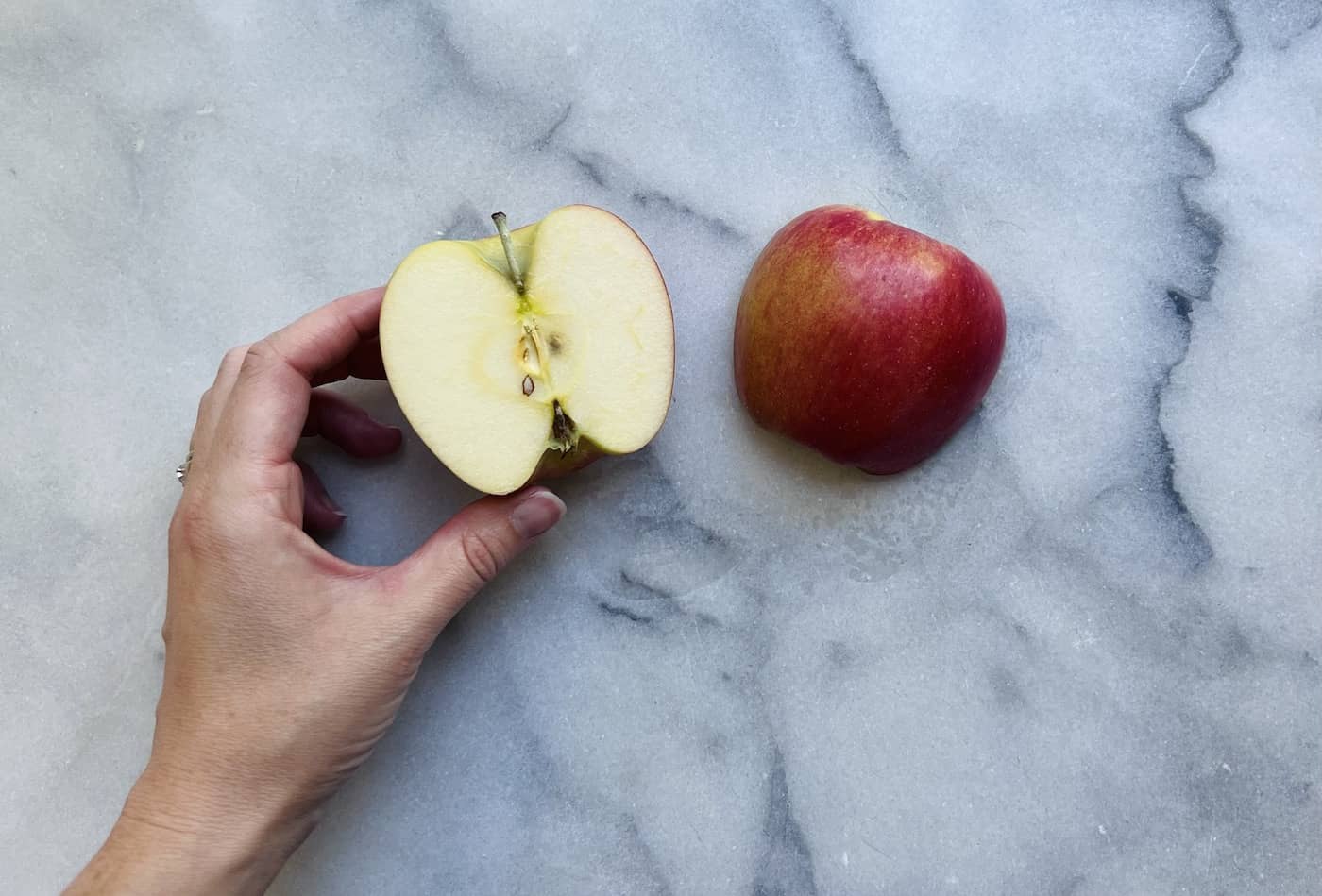
Where are Ambrosia apples grown?
Ambrosia Apples are grown mainly in British Columbia and Washington state, although new orchards are being planted each year. To ripen properly, Ambrosia Apples require a growing climate with warm fall days and crisp, cold nights. The daily temperature swings in autumn help the apples develop their characteristic red color.
Here are some areas where Ambrosia Apples are grown:
- British Columbia
- Ontario
- Nova Scotia
- Washington
- Chile
- New Zealand
- Australia
Unfortunately, Ambrosia Apple trees are not currently available for purchase at garden centers or nurseries. For a similar fresh-eating apple you can grow in your own backyard, consider growing Fuji, Cripps Pink, or Honeycrisp apples.
The Ambrosia harvest season
Harvest season for Ambrosia Apples is generally from late September to early October, making Ambrosia a mid-to-late season variety. USA-grown apples from more southern growing areas may be available in mid-September, while Canadian apples generally stretch longer in autumn to ripen on the tree.
Ambrosia Apples start to develop their characteristic red color about two weeks before the harvest. Orchardists test the ripening apples daily to observe the key, telltale process of starch converting to sugar.
The harvest must be perfectly timed, with the fruit harvested at the peak of its flavor. Ambrosia Apples tend to ripen all at once, meaning that a large orchard will require a large crew to pick them all. A well-timed harvest leads to apples that are not only sweeter but also store on the shelf for much longer.
Ambrosia Apples are in season from late September through December. Well-stored whole apples can be kept through winter in cold storage, and routinely last until late spring. Ambrosia is among the best apple varieties for long-term storage.
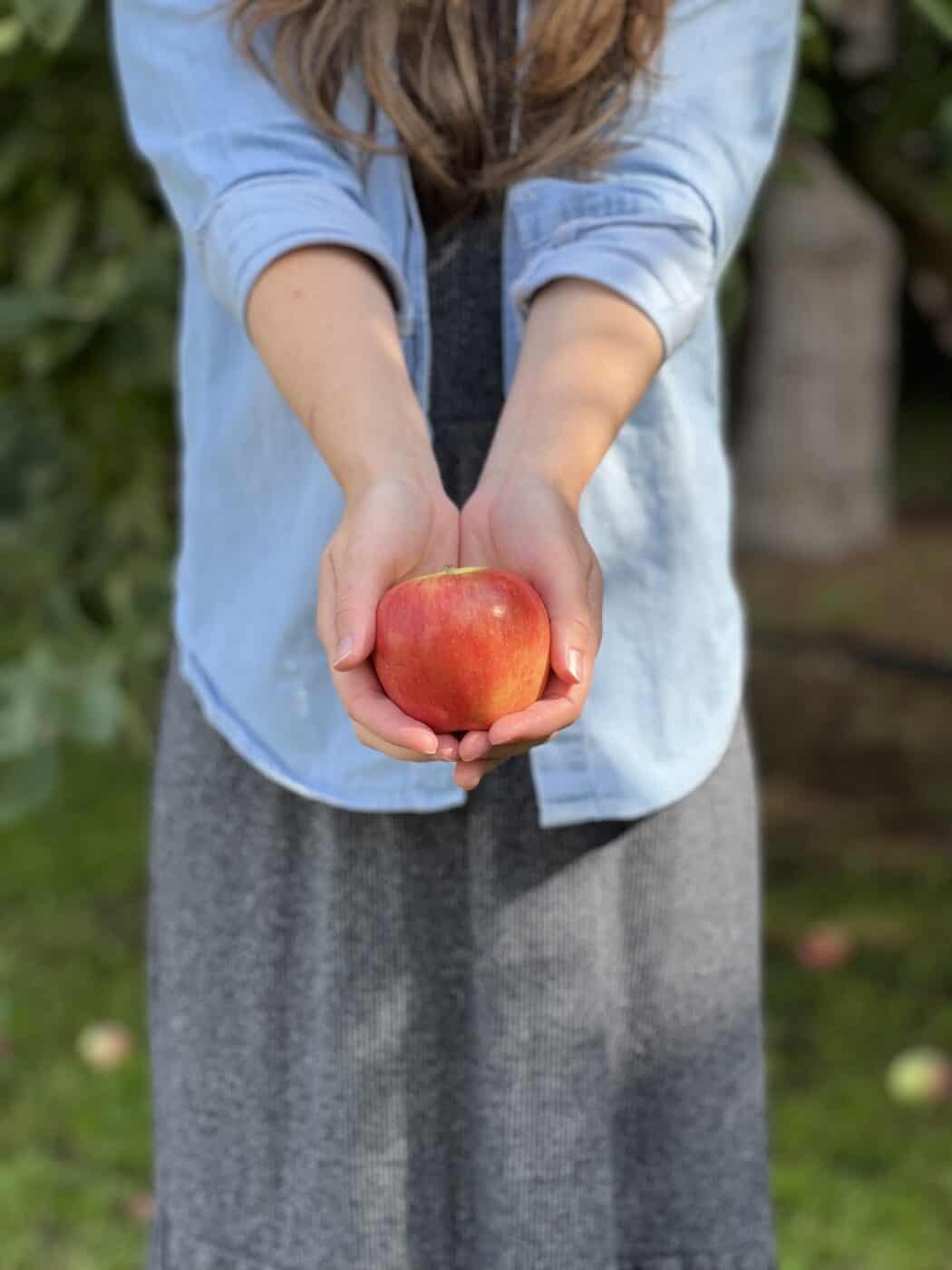
Tips for buying Ambrosia apples
The best time of year to buy Ambrosia Apples is in late fall or early winter, following harvest. This variety is now available at major grocers including Kroger and Walmart. Look for whole apples without bruising or other damage, and store them in the crisper drawer of your fridge.
Ambrosia Apples store exceptionally well in controlled-atmosphere commercial settings and can be purchased fresh throughout winter and into the springtime. Ambrosia Apples from New Zealand and Australia are available in North America in spring and summer.
A single Ambrosia Apple is medium to large in size, weighing 7-8 oz (200-225 g). Two whole Ambrosia Apples generally weigh slightly less than one pound. Ambrosia Apples often cost $2.50 to $3.00 per pound at the grocery store. It is not unusual to see a single apple of this sweet variety priced at $2/ea at the till of a coffee shop or deli.
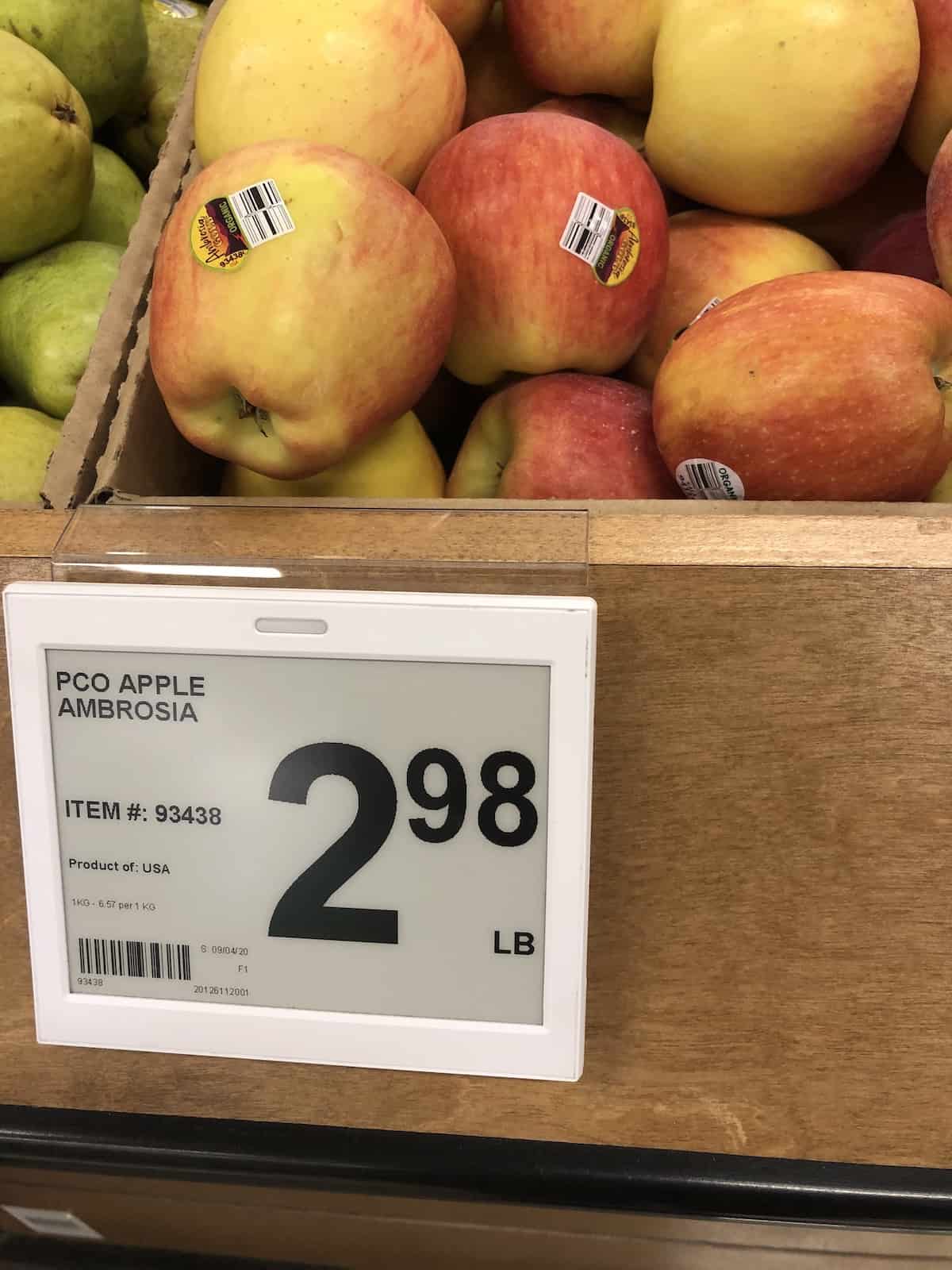
What to make with Ambrosia apples
Ambrosia Apples are incredibly versatile in the kitchen. They are perfect for slicing on a savory cheese board or baking into a sweet crumble. Pretty much any apple recipe can be made with Ambrosia Apples (and you might be able to cut back on any added refined sugar!).
One tip from the growers is not to use lemon juice to keep them from browning. Ambrosia Apples are naturally resistant to browning and can sit out for hours before they start to turn brown. There’s also no need to peel them in most cases, as the skin is thin and adds to the crispy crunch of the fresh apple experience.
“Ambrosia apples brown slower than other apples, so they don’t need any lemon juice to keep the flesh looking white and fresh. In fact, an Ambrosia WITHOUT lemon juice still browns slower than most other apples WITH lemon juice. So, don’t sour Ambrosia’s delicious flavour with lemon.”
6 Mistakes People Make With Ambrosia Apples, AmbrosiaApples.ca
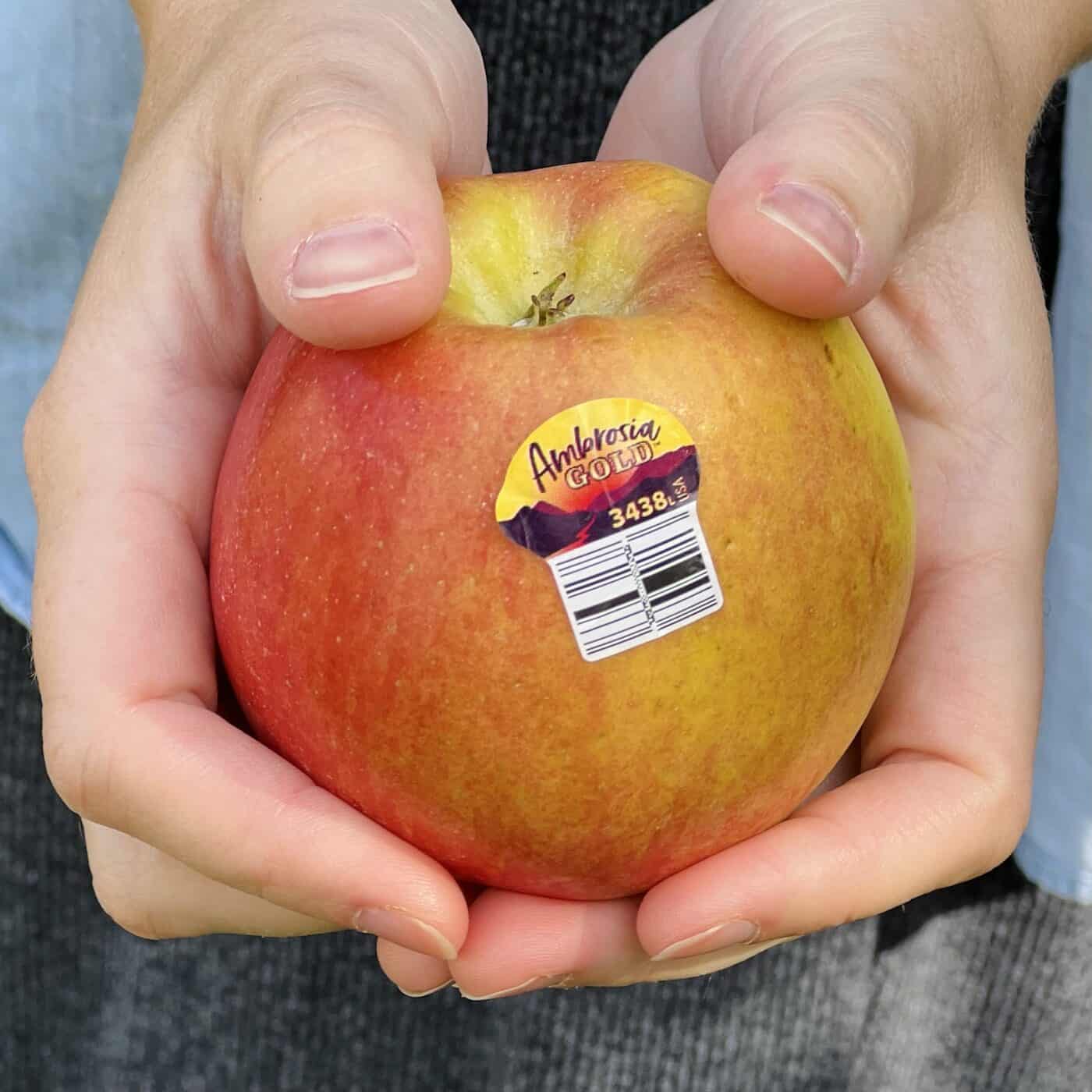
Baking with Ambrosia apples
Ambrosia apples are excellent for baking (including apple pie). Their sweet flavor and dense texture are well-suited to oven-cooked dishes. The natural sugars in Ambrosias may allow you to reduce the amount of added refined sugar in a given recipe:
“We’ve tested a lot of recipes using Ambrosia apples. And, we’ve discovered that when converting a dessert recipe that calls for sugar with apples, like a tart or apple butter, for example, you can use significantly less sugar when working with Ambrosia apples. It’s often as much as half what the original recipe calls for.”
6 Mistakes People Make With Ambrosia Apples, AmbrosiaApples.ca
Ambrosia Apple recipes
Here are some yummy Ambrosia Apple recipes to try:
- Ambrosia Apple Crisp with Dolce de Leche
- Brie, Apple, and Honey Crostini
- Rustic French Apple Tart
- Ambrosia Apple Ice Pops
- Avocado, Apple, and Chicken Salad
Substitutes for Ambrosia apples
Both Honeycrisp and Pink Lady Apples are excellent fresh substitutes for Ambrosia Apples in recipes. The variety is also noted to be similar to Jonagold and Envy (and Envy is also slow to brown). Why not hold an apple tasting to try them all!
